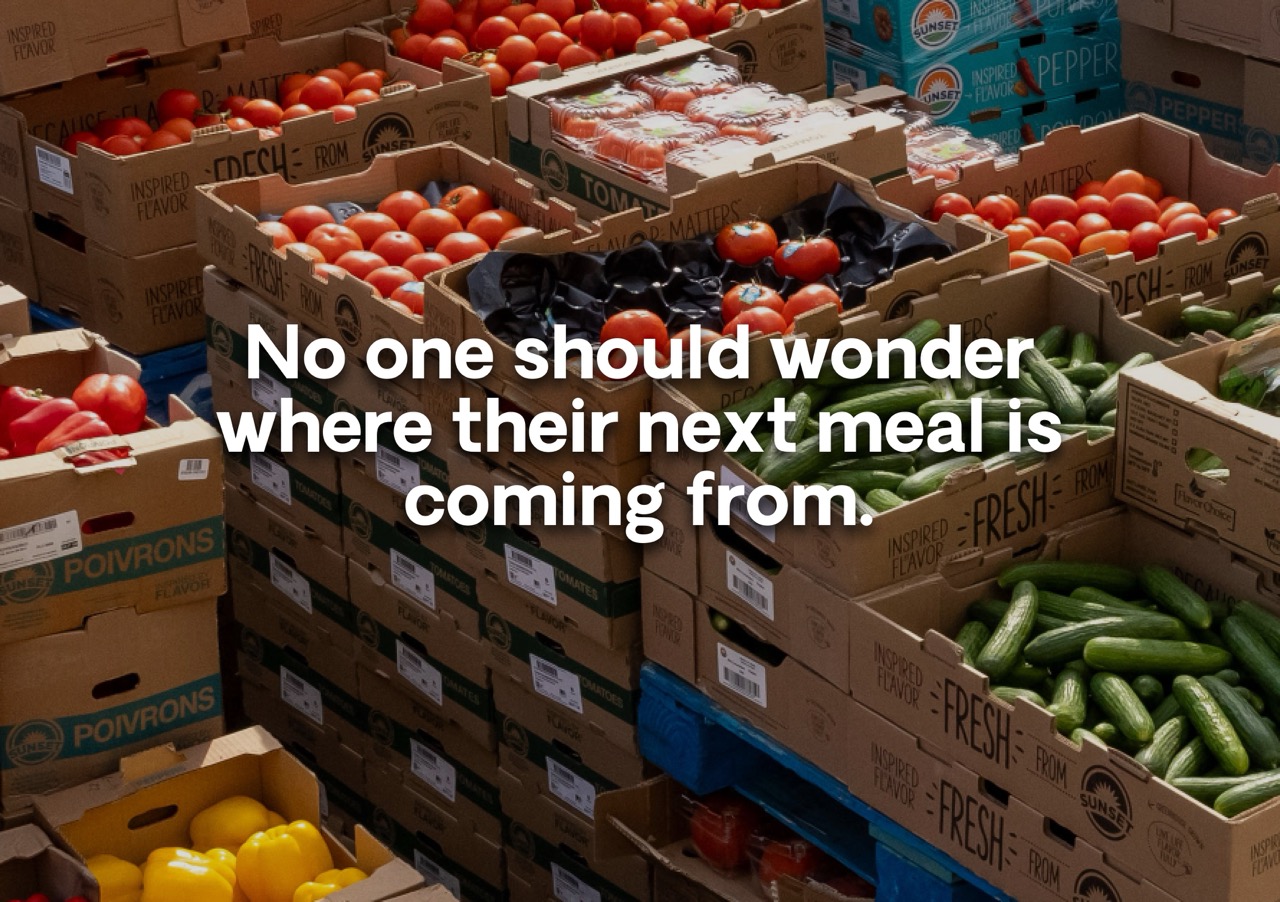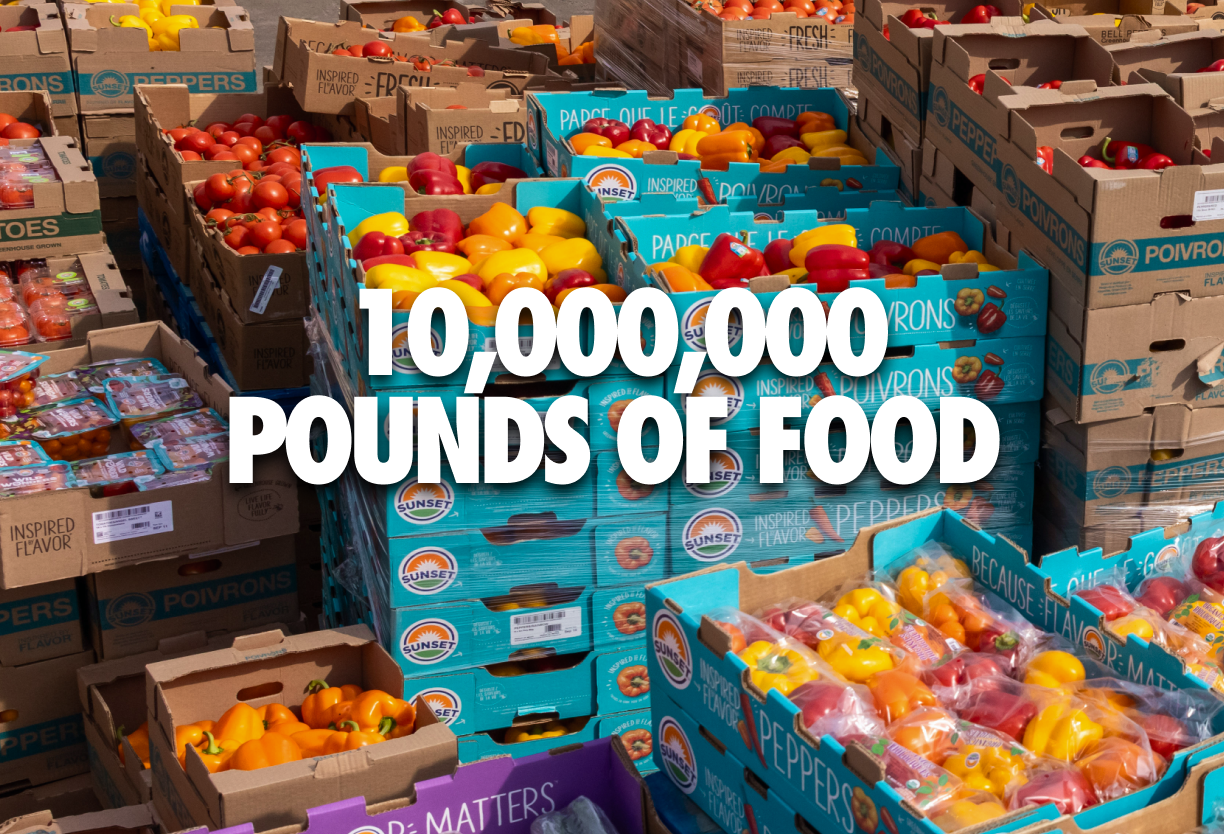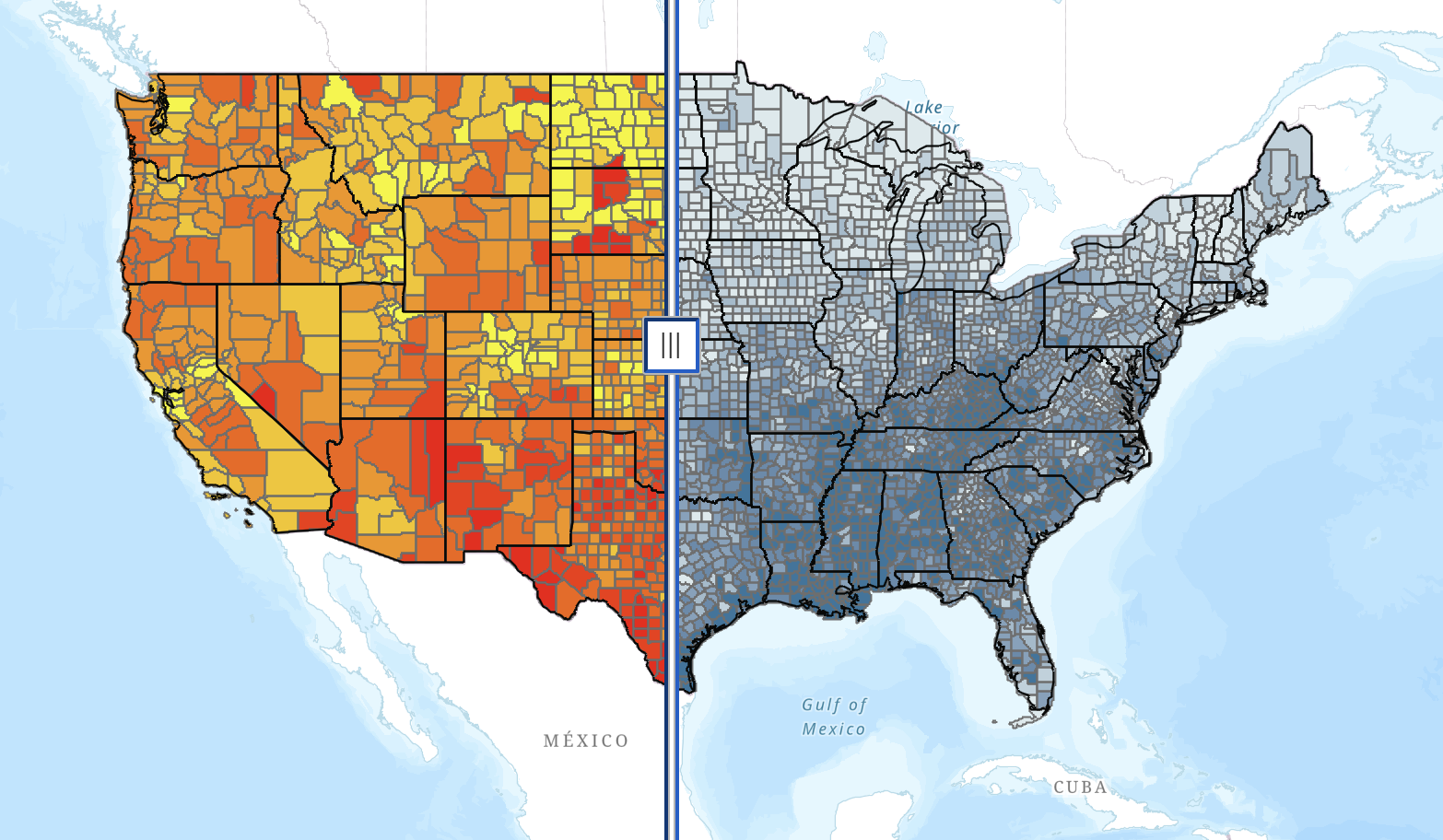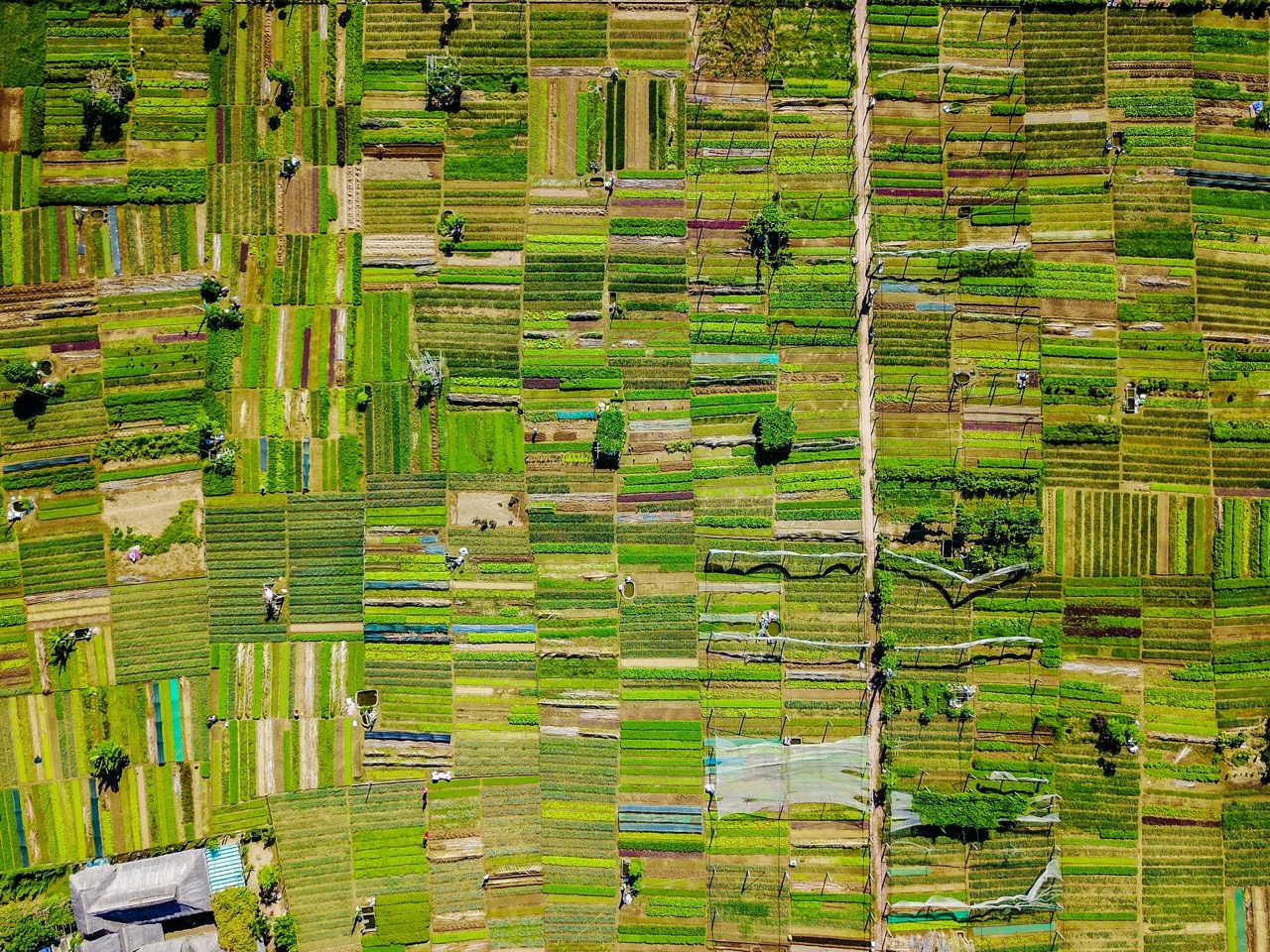With families displaced, jobs lost, and homes and businesses destroyed, food insecurity has been exacerbated in communities impacted by Hurricane Ida. Founded in response to the onset of the COVID-19 pandemic in spring of 2020, The Farmlink Project recognizes the severe effects that unexpected crises can have on a community’s food security. In an effort to mitigate these effects on areas hit by Hurricane Ida, our Core team, which is responsible for facilitating deliveries, developing relationships with farms, and identifying communities in need, worked hard to deliver products to communities suffering in the wake of the hurricane. On September 4, 2021, the last day of Hurricane Ida’s eight-day run, Coast Tropical Farm in McAllen, Texas donated about 40,000 pounds of mangoes to Extra Table Food Bank, in Hattiesburg, Mississippi.
Anabel Branly, the Operations Manager at Coast Tropical Farm, oversees the receiving, packing, storage, and shipping of the farm’s produce, and is responsible for complying with food safety regulations. Coast Tropical imports an abundance of mangoes from Mexico to sell in the United States, so it was “the perfect fruit to donate as we always have a large volume in inventory,” as Anabel said.
According to Clayton Elbel, a Hunger and Outreach Team (HOT) Lead at The Farmlink Project and college junior studying agricultural economics at Texas A&M University, the process of moving the mangoes from Texas to Mississippi was tricky, given the circumstances associated with the hurricane.
“Through truck breakdowns, flooded roads, and drop-off logistics, such as limited storage capacity, we were ultimately able to get the mangoes to Extra Table.”
While many Farmlinkers were on a recessional break as our team transitioned from the summer term to the fall term, a part of our team volunteered to work through the break in order to continue moving food to communities in need, particularly in light of the exacerbated food insecurity resulting from Hurricane Ida.
“The biggest challenge in relation to Hurricane Ida was that there were limited resources at our disposal,” Clayton said. “It was during the break, so we had limited access to our Core team members. The heavy rain and flooding that ensued from the hurricane also presented a challenge in delivering the produce.” Though the whole team was not actively involved throughout the two-week break running from the end of August and into September, Clayton credits the Core team as a whole with making these deliveries possible. We are so grateful to all those involved, both within our team and in our greater Farmlink Project community, who worked on this delivery and all other Hurricane Ida-relief efforts.
< Back
With families displaced, jobs lost, and homes and businesses destroyed, food insecurity has been exacerbated in communities impacted by Hurricane Ida. Founded in response to the onset of the COVID-19 pandemic in spring of 2020, The Farmlink Project recognizes the severe effects that unexpected crises can have on a community’s food security. In an effort to mitigate these effects on areas hit by Hurricane Ida, our Core team, which is responsible for facilitating deliveries, developing relationships with farms, and identifying communities in need, worked hard to deliver products to communities suffering in the wake of the hurricane. On September 4, 2021, the last day of Hurricane Ida’s eight-day run, Coast Tropical Farm in McAllen, Texas donated about 40,000 pounds of mangoes to Extra Table Food Bank, in Hattiesburg, Mississippi.
Anabel Branly, the Operations Manager at Coast Tropical Farm, oversees the receiving, packing, storage, and shipping of the farm’s produce, and is responsible for complying with food safety regulations. Coast Tropical imports an abundance of mangoes from Mexico to sell in the United States, so it was “the perfect fruit to donate as we always have a large volume in inventory,” as Anabel said.
According to Clayton Elbel, a Hunger and Outreach Team (HOT) Lead at The Farmlink Project and college junior studying agricultural economics at Texas A&M University, the process of moving the mangoes from Texas to Mississippi was tricky, given the circumstances associated with the hurricane.
“Through truck breakdowns, flooded roads, and drop-off logistics, such as limited storage capacity, we were ultimately able to get the mangoes to Extra Table.”
While many Farmlinkers were on a recessional break as our team transitioned from the summer term to the fall term, a part of our team volunteered to work through the break in order to continue moving food to communities in need, particularly in light of the exacerbated food insecurity resulting from Hurricane Ida.
“The biggest challenge in relation to Hurricane Ida was that there were limited resources at our disposal,” Clayton said. “It was during the break, so we had limited access to our Core team members. The heavy rain and flooding that ensued from the hurricane also presented a challenge in delivering the produce.” Though the whole team was not actively involved throughout the two-week break running from the end of August and into September, Clayton credits the Core team as a whole with making these deliveries possible. We are so grateful to all those involved, both within our team and in our greater Farmlink Project community, who worked on this delivery and all other Hurricane Ida-relief efforts.
Hurricane Ida Relief with Coast Tropical Farm
McAllen, Texas, to Hattiesburg, Mississippi
With families displaced, jobs lost, and homes and businesses destroyed, food insecurity has been exacerbated in communities impacted by Hurricane Ida. Founded in response to the onset of the COVID-19 pandemic in spring of 2020, The Farmlink Project recognizes the severe effects that unexpected crises can have on a community’s food security. In an effort to mitigate these effects on areas hit by Hurricane Ida, our Core team, which is responsible for facilitating deliveries, developing relationships with farms, and identifying communities in need, worked hard to deliver products to communities suffering in the wake of the hurricane. On September 4, 2021, the last day of Hurricane Ida’s eight-day run, Coast Tropical Farm in McAllen, Texas donated about 40,000 pounds of mangoes to Extra Table Food Bank, in Hattiesburg, Mississippi.
Anabel Branly, the Operations Manager at Coast Tropical Farm, oversees the receiving, packing, storage, and shipping of the farm’s produce, and is responsible for complying with food safety regulations. Coast Tropical imports an abundance of mangoes from Mexico to sell in the United States, so it was “the perfect fruit to donate as we always have a large volume in inventory,” as Anabel said.
According to Clayton Elbel, a Hunger and Outreach Team (HOT) Lead at The Farmlink Project and college junior studying agricultural economics at Texas A&M University, the process of moving the mangoes from Texas to Mississippi was tricky, given the circumstances associated with the hurricane.
“Through truck breakdowns, flooded roads, and drop-off logistics, such as limited storage capacity, we were ultimately able to get the mangoes to Extra Table.”
While many Farmlinkers were on a recessional break as our team transitioned from the summer term to the fall term, a part of our team volunteered to work through the break in order to continue moving food to communities in need, particularly in light of the exacerbated food insecurity resulting from Hurricane Ida.
“The biggest challenge in relation to Hurricane Ida was that there were limited resources at our disposal,” Clayton said. “It was during the break, so we had limited access to our Core team members. The heavy rain and flooding that ensued from the hurricane also presented a challenge in delivering the produce.” Though the whole team was not actively involved throughout the two-week break running from the end of August and into September, Clayton credits the Core team as a whole with making these deliveries possible. We are so grateful to all those involved, both within our team and in our greater Farmlink Project community, who worked on this delivery and all other Hurricane Ida-relief efforts.
.png)







.svg)
.svg)
.svg)